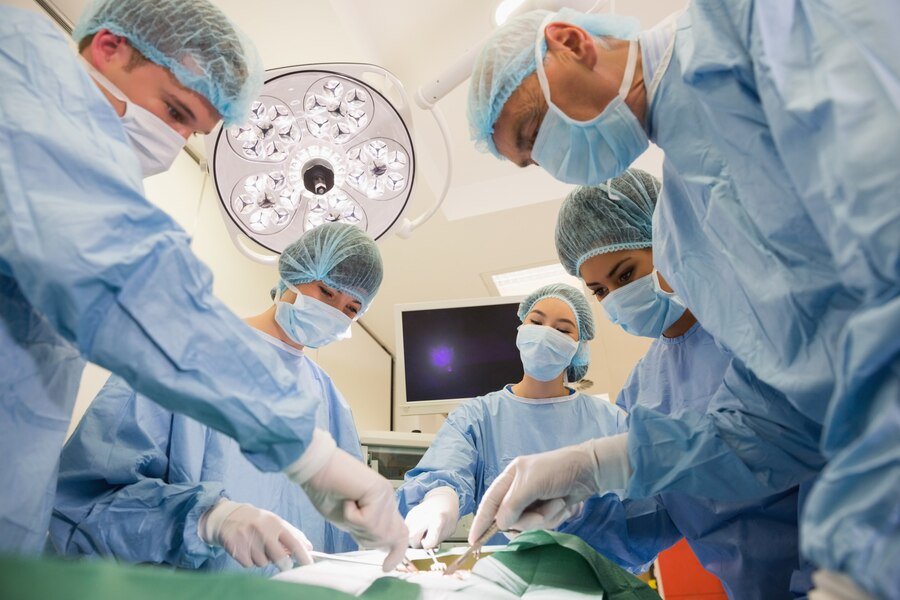Current Trends And Innovations In Laparoscopic Hysterectomy
Laparoscopic hysterectomy has revolutionized the field of gynecological surgery, offering patients less invasive alternatives to traditional open procedures. Over the years, advancements in technology and surgical techniques have continually improved outcomes, reduced recovery times, and enhanced patient satisfaction. In this article, we delve into the current trends and innovations shaping the landscape of laparoscopic hysterectomy.
To Know More About It Please Click Here
Robotic-Assisted Laparoscopic Hysterectomy
One of the most significant advancements in laparoscopic hysterectomy is the integration of robotic technology. Robotic-assisted laparoscopic hysterectomy combines the precision of robotic instruments with the dexterity of laparoscopic surgery, allowing for more complex procedures with improved surgical outcomes. Surgeons benefit from enhanced visualization and greater maneuverability, leading to reduced blood loss, shorter hospital stays, and faster recovery times for patients.
Single-Incision Laparoscopic Hysterectomy (SILH)
Single-incision laparoscopic hysterectomy represents a groundbreaking approach to minimally invasive surgery. Unlike traditional laparoscopic techniques that require multiple small incisions, SILH involves performing the entire procedure through a single incision, usually in the belly button. This approach offers several advantages, including improved cosmesis, reduced postoperative pain, and potentially faster recovery. As technology advances and surgical expertise grows, SILH is becoming increasingly popular among patients seeking minimally invasive alternatives to conventional hysterectomy.
Enhanced Imaging Modalities
Advancements in imaging modalities have played a crucial role in improving the safety and efficacy of laparoscopic hysterectomy. Techniques such as three-dimensional (3D) imaging and fluorescence imaging provide surgeons with enhanced visualization of anatomical structures and blood flow during surgery. This improved visualization facilitates more precise dissection, reduces the risk of complications, and ultimately improves patient outcomes. Additionally, the integration of augmented reality (AR) technology holds promise for further enhancing surgical navigation and decision-making in laparoscopic hysterectomy.
Energy-Based Devices
Energy-based devices, such as advanced electrosurgical instruments and ultrasonic dissectors, have revolutionized tissue dissection and hemostasis in laparoscopic hysterectomy. These devices utilize various energy sources, including radiofrequency, ultrasonic waves, and bipolar energy, to precisely cut and coagulate tissue, minimizing blood loss and reducing operative time. Moreover, the development of advanced sealing devices has made laparoscopic hysterectomy safer by minimizing the risk of bleeding and ensuring secure tissue approximation. Continued research and innovation in energy-based devices are expected to further improve surgical outcomes and expand the scope of minimally invasive gynecological surgery.
Enhanced Recovery After Surgery (ERAS) Protocols
In recent years, there has been growing recognition of the importance of perioperative care in optimizing surgical outcomes and enhancing patient recovery. Enhanced Recovery After Surgery (ERAS) protocols are multidisciplinary pathways designed to minimize surgical stress, reduce complications, and accelerate recovery following surgery. By incorporating evidence-based interventions such as preoperative optimization, intraoperative fluid management, and early mobilization, ERAS protocols have been shown to significantly improve outcomes in laparoscopic hysterectomy. Embracing ERAS principles not only enhances patient satisfaction but also reduces healthcare costs associated with prolonged hospital stays and postoperative complications.
Conclusion
The field of laparoscopic hysterectomy continues to evolve rapidly, driven by technological advancements and innovative surgical techniques. From robotic-assisted surgery to single-incision approaches, enhanced imaging modalities, energy-based devices, and ERAS protocols, these developments are transforming the landscape of gynecological surgery. As these trends continue to shape the future of laparoscopic hysterectomy, patients can expect safer, more effective, and less invasive treatment options for various gynecological conditions.
Also, Follow us on Instagram







